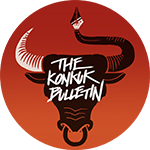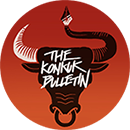

Everyone had to go through big changes during the first semester due to COVID-19. Students took online lessons in their homes, professors prepared lectures in a completely unfamiliar way, and most university events were canceled. Only through such inconveniences could Konkuk University finish the first semester. However, the pandemic has not ended and the second semester of KU still seems difficult to operate as it did before.
COVID-19 cases started to resurge just when the semester was just around the corner. Universities that were planning to conduct offline lectures had to announce a conversion to online lectures once again. KU, which planned to carry out the second semester in a “blended learning” manner, also had to discard its original plan and establish new guidelines. KU currently decided to conduct all lectures online for three weeks. However, uncertainties and concerns remain about the safety and possibility to conduct offline lectures afterwards. Given such a situation, the Konkuk Bulletin will look back upon prior academic arrangements that KU has followed and examine anticipated problems for a safer and less troubled second semester.
Review of academic arrangements
Lectures
The first semester of 2020 has been conducted online to prevent infections of COVID-19. Although it was inevitable, the sudden shift to online classes was an unprecedented situation for everyone and resulted in problems. According to a survey conducted on the beginning of April by the General Student Association (GSA), “To Twenty”, students’ overall satisfaction with online lectures was 2.66 out of a total of five, indicating that improvement was needed. Students’ satisfaction with the quality of the provided videos was also low, scoring an average of 2.75 out of five. The major complaints were about the sound and resolution qualities of the videos. In some lectures, videos have not been uploaded without any notice. KU decided to conduct lectures without practical training online until the 7th week, and those with practical training for three weeks for the moment. Although many lectures have improved, some lectures still lack sufficient quality.
Lectures in which face-to-face interactions are required, as in experiments or practical training, were conducted offline from May 4. Before this scheduled date, KU promised to establish thorough preventive measures against the spread of COVID-19 and allowed students to make their own decisions on whether to attend or not. However, there were reported cases in which students were unilaterally notified to attend the lectures. The fact that KU had no specific guidelines about such cases or separate channels to receive complaints from students made the problem worse.
Examination and Evaluation
Examination and evaluation methods were also a major concern for both students and professors. In order to minimize the possibility of infection, KU prohibited offline examination except for classes that were conducted offline from May 4. Also, all lectures were graded in an absolute evaluation for a fair assessment. Despite the rapidly changing policy on examinations, problems occurred regarding the notification of it. Most lectures were promptly notified, but some were overly late, in some cases being notified only days before the actual exam. Students who were informed late had difficulties preparing for the exams or finishing their assignments. Concerns on the fairness of the exams were also left unresolved. There were actual cases of cheating reported in several universities. KU also confirmed a case of cheating during the midterms. While disciplinary actions were taken to the students, no guidelines to assure the fairness of the exams were established nor announced afterwards by the university.
The process of tuition refund
From April 13, student representatives and school personnel representatives of the Tuition Review Subcommittee (TRS) have gathered to discuss the management and refund of tuition since its uses had been altered from the original budget due to COVID-19. Through continuous discussions, the subcommittee agreed on a partial refund of tuition. Following this decision, 100,000 won and a maximum of 5.8 percent of paid tuition was given to every student who had registered in the first semester in the form of a scholarship. Although KU was the first to respond to the students’ request for a partial refund on the tuition, there are negative opinions on the way the amount was decided. Although the GSA collected students’ opinions on the tuition refund through surveys, there were opinions that the process lacked sufficient communication between the university and students. The meeting minutes of the TRS gatherings, which was the most direct way students could gain information about the progress, were disclosed on September. This was about two months after the announcement of tuition refund and the meeting minutes did not have enough information on the process. Students did not have enough information, opportunity, and method to actively express their opinion in the decision making process.
Additionally expected problems
Feasibility of a thorough prevention
The second wave of COVID-19 was an upsetting event for everyone since it meant a further postpone of a return to a normal life. The case numbers are not easily decreasing, and the second wave seems to imply that offline lectures might be too early to be conducted in the second semester. However, a complete conversion to online lectures is yet discussed and some lectures are currently planned to be held offline after the 7th week. Then the question to be focused is how lectures will be conducted after the 7th week, when the currently announced period of mandatory online lectures is over. Leaving everything else aside, the most important aspect is whether the university has enough resources and a thorough plan to carry out sufficient prevention measures against COVID-19.
Currently, the main prevention measures are the body temperature checkups and the surveys students fill out on their symptoms and contact with the infected. These measures might have been conducted well so far, but more people are to be expected using more facilities than in the previous eight months. There are about 20 buildings used for lectures and more if frequently used buildings such as the Student Union Building A and the Sanghuh Memorial Library are counted. Without an increase in both devices and manpower, thorough prevention will be difficult. Prevention measures on more people also mean that more people will have to wait for their turn to come. This will not only cause a delay for the students but also increase the risk of infection among the waiting people.
Substitution of the school festival
KU had to cancel, postpone, or change several planned programs due to COVID-19. For example, the Konkuk University Festival has been postponed to the second semester and most extracurricular programs were conducted online. Even if offline lectures are conducted later on, holding such large-scale programs would still be unsafe to be held. Additionally, there are some students that reluctantly gave up one or two offline lectures because otherwise they will have to pay for a place to live in Seoul for just a few lectures. Holding university programs offline in such a situation will be a problem as it is risky for the participants and unfair for those unable to participate. This makes substitute programs more necessary. However, there have been no announcements or attempts to have a conversation with the students about this issue yet.
Anticipated and necessary efforts
Development in disinfection measures
Thorough prevention is, of course, the most basic effort that needs to be implemented since COVID-19 is still a threat worldwide. However, as mentioned before, development in prevention measures needs to take place first. This does not simply mean that KU needs to increase the number of devices used for body temperature checkups and recruit more people for the work. Above all, a more systematic prevention scheme is needed. For example, Sookmyung Women’s University (SMWU) has been conducting separate disinfection operations along with regular ones on areas where the risk of infection is expected to be high. Before the disinfection, specific information on how the job will be operated was notified through the university’s website. In addition to this, SMWU actively used its online systems for an untroubled implementation of self-checkups, attendance and entrance to buildings, as well as reporting on any symptoms. Applying such cases to KU’s prevention measures will certainly systematically improve it.
Preparation and notification of detailed guidelines
COVID-19 has made everything uncertain to the point where students are unsure if they will visit the campus and professors do not know if they will be able to meet any students during the semester. It is the university’s role to relieve such uncertainty. The best way to achieve this goal is to prepare and provide detailed guidelines for expected or possible events. For example, Seoul National University has provided a response manual on COVID-19 situation. It includes detailed information on how students and university faculties should act when infected with COVID-19 and how attendance and school work will be handled respectively. SMWU has also established a detailed response manual. It includes a list of university organizations and their role so that people can have a better grasp on which organization to contact when a problem occurs. KU should also reinforce its guidelines including meticulous countermeasures to prepare for problems regarding lectures, examinations, evaluations. More importantly, such guidelines should be promptly notified. For it to be effective in the fight against COVID-19, everyone related to KU should be able to see and have a broader understanding on how matters will be carried out.
Prompt and direct feedbacks
The last, but probably the most required measure is a way of reciprocal feedbacks between every part of the university. COVID-19 is an unprecedented disaster and no one has a clear idea of what to do. This unawareness can be relieved when a clear delivery of one’s situation and a prompt response is possible. The process of how our tuition refund occurred is a good example. Although not completely ideal, the overall process was handled through reciprocal feedbacks. The student representatives of the TRS collected students’ opinions on a tuition refund, delivered it to the school personnel representatives, and a practical solution was arrived at.
However, not every case can be so time-consuming. Imminent problems, as in the low quality of videos or late notification of examination methods, require promptness. This brings up the need for a more direct feedback method between the students and the university. By establishing a direct connection, students will have more opportunities to deliver their opinions on the implemented measures or on the problems they are experiencing. Along with the establishment of such connection, KU should arrange staff members and a reporting system, With it, KU will be able to operate the second semester more efficiently.
Conclusion
COVID-19 is not something we can exclude from our lives anymore. It has dramatically changed our lives and is expected to do the same for a while. In such a situation, waiting passively for the pandemic to end is not an appropriate decision. Society should start devising ways to adapt to this new world and it requires a continuous conversation between every social standing. This applies to KU as well. Although COVID-19 is a very big hardship to bear, KU will be able to overcome the pandemic and, with the systems it establishes during this year, take the step forward for a better university it aims to be.

